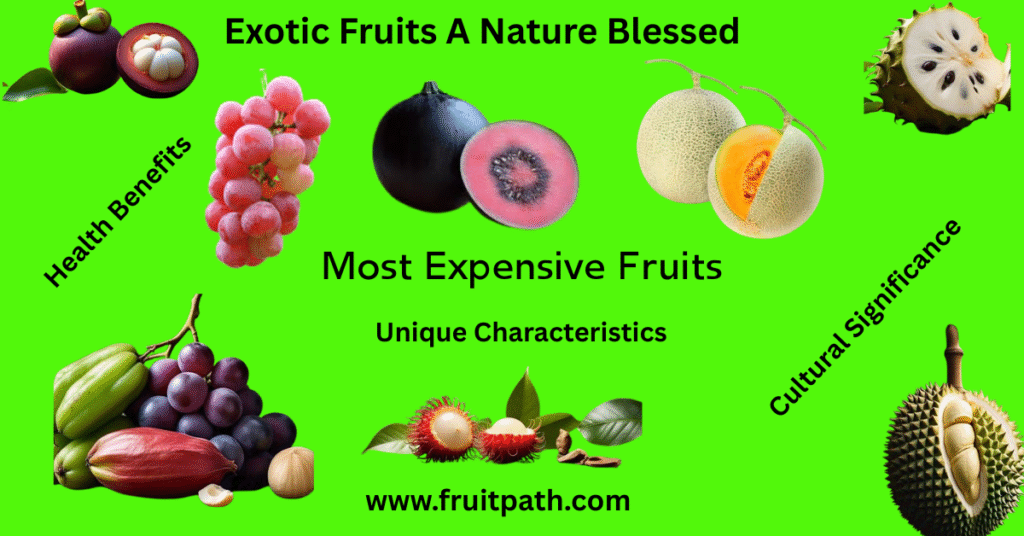- What Are Exotic Fruits? Your Passport to Nature's Wild Side:
- Top 20 Exotic Fruits to Try Before someone tell you:
- Determining Characteristics of Exotic Fruits:
- Unique Characteristics of Exotic Fruits:
- Exotic Fruits are Packed With Health Benefits:
- Most Expensive Exotic Fruits: Luxury in Every Bite:
- How to (Maybe) Try Them Cheaper:
- How to Buy Exotic Fruits with Confidence
- Why Exotic Fruits Deserve a Spot in Your Kitchen:
- Question and Answers:
What Are Exotic Fruits? Your Passport to Nature’s Wild Side:
Nature blessed us with countless things. When we talk about fruits, the exotic fruits are the most unusual, extraordinary, and unique blessing for mankind. These fruits have vibrant colors, bizarre shapes, and unforgettable tastes.
Imagine suddenly, you noticed a neon pink fruit with green spikes, which looks like that this fruit came from another planet or from heaven, So that could be your first introduction to nature’s wonderful gift of exotic fruits.
You can not easily do unseen exotic fruits, because they are most flamboyant masterpieces , unconventional and bursting with flavors that defy expectations. Unlike other common fruits these botanical donders push the boundaries of what we consider “normal fruit”.
So, let’s define the word exotic, it comes from the Latin word exoticus, which means “outside or foreign” , if we search more about the word exotic, we found that it’s borrowed from the Greek “exotikos” word, which means “outside”.
Therefore, we know the meaning of exotic fruits , the fruit which is not native and rare for the country or region where it is not grown or cultivated. In this blog we discover how exotic fruits, A nature blessed for us.
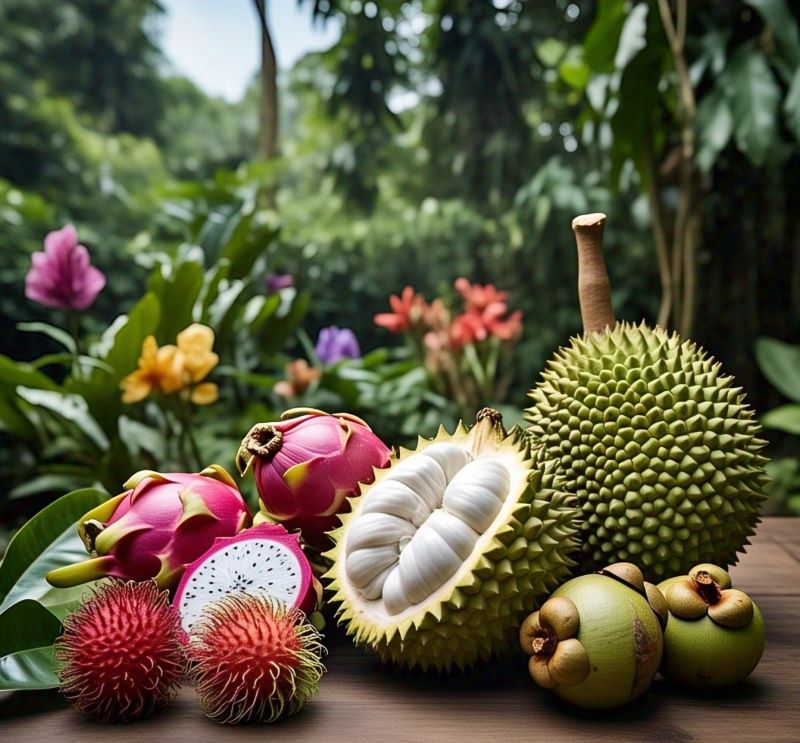
Top 20 Exotic Fruits to Try Before someone tell you:
So, its time to know about top 20 exotics fruits, like their native country and taste,features, and fun-facts, let’s discover it:
1. Durian (Malaysia)
- Taste: Complex creamy custard with notes of caramel, onion, and vanilla
- Unique Feature: Spiky armor-like husk with famously pungent aroma.
- Best Enjoyed: Fresh at street markets in Southeast Asia.
- Fun Fact: Durian fruit banned from many hotels and public transport due to its strong smell.
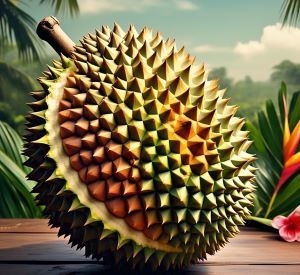
2. Dragon Fruit (Vietnam)
- Taste: Mild, subtly sweet like a cross between kiwi and pear.
- Unique Feature: Vibrant pink skin with white or magenta flesh dotted with edible black seeds.
- Best Enjoyed: Chilled and scooped straight from the rind, or blended into smoothie bowls.
- Fun Fact: Dragon fruit’s flower only blooms for one night and is called “moonflower” or “Queen of the Night.”
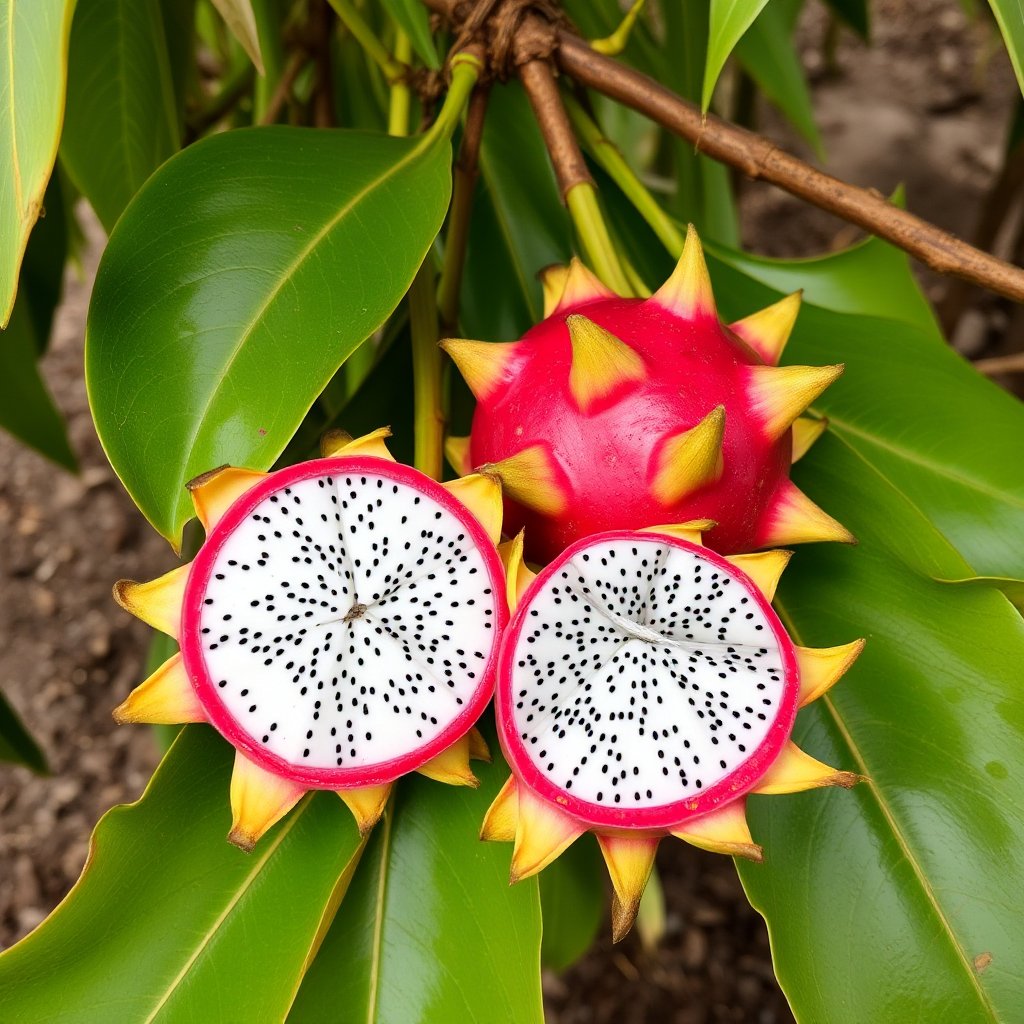
3. Jackfruit (India)South Asia
- Taste: Sweet and slightly tangy, with a flavour that’s a mix of banana, mango, and pineapple
- Unique Feature: Large, green, and spiky exterior with yellow or orange flesh that’s rich in nutrients.
- Best Enjoyed: Ripe jackfruit can be eaten fresh, used in desserts, or blended into smoothies. Young, unripe jackfruit is often used in savory dishes like curries and stews.
- Fun Fact: Jackfruit is the largest tree-borne fruit in the world, reaching up to 8 feet long and 2 feet wide, and weighing as much as 100 pounds!
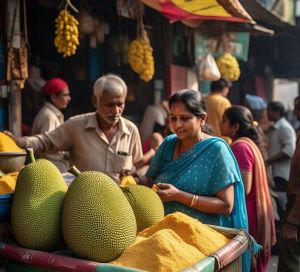
4. Mangosteen (Thailand)
- Taste: The flavour of mangosteen fruit like, Lusciously sweet with peach, strawberry and citrus notes.
- Unique Feature: Thick purple rind hiding snow-white segments.
- Best Enjoyed: Fresh when the rind yields slightly to pressure.
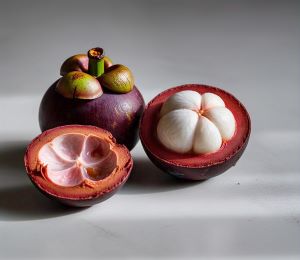
5. Rambutan (Philippines)
- Taste: Similar to lychee but more floral and juicy.
- Unique Feature: Hairy red/green exterior that peels easily.
- Best Enjoyed: Chilled straight from the shell.

6. Starfruit (Sri Lanka)
- Taste: Crisp and refreshing like a grape-apple hybrid.
- Unique Feature: Star-shaped cross-sections when sliced.
- Best Enjoyed: Starfurit is ideal patner In salads or as edible cocktail garnish.

7. Soursop (Mexico)
- Taste: Tropical blend of strawberry, pineapple and citrus.
- Unique Feature: Spiky green skin with fibrous white flesh.
- Best Enjoyed: As juice, ice cream or eaten fresh with a spoon.
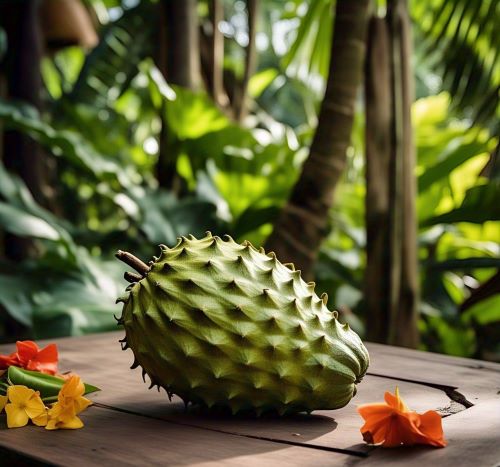
8. Cherimoya (Peru)
- Taste: Like a creamy fusion of banana, pineapple and strawberry
- Unique Feature: Reptilian-looking green scales
- Best Enjoyed: Chilled and eaten with a spoon just like an ice cream made by nature.
- Fun Fact: Mark Twain called it “the most delicious fruit known to men”
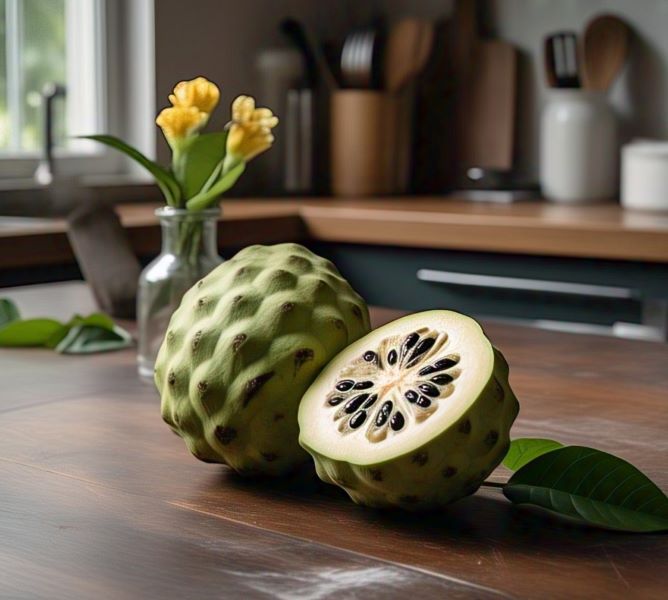
9. Acai (Brazil)
- Taste: Earthy berry with chocolate undertones.
- Unique Feature: Grows on palm trees in the Amazon.
- Best Enjoyed: As frozen puree in bowls with granola.
- Fun Fact: Traditional Amazonian energy food for hunters.
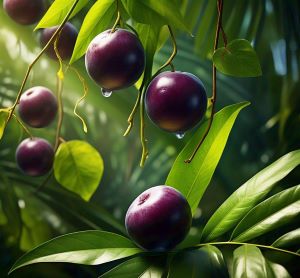
10. Kiwano (Africa)
- Taste: Mild cucumber-lemon flavor.
- Unique Feature: Vibrant orange spiked shell.
- Best Enjoyed: Scooped out or used in cocktails.
- Fun Fact: Also called “horned melon”

11. Black Sapote (Mexico)
- Taste: Chocolate pudding-like texture and flavor.
- Unique Feature: Green skin turns brown when ripe.
- Best Enjoyed: Chilled with vanilla ice cream.
- Fun Fact: Called “chocolate pudding fruit”.

12. Buddha’s Hand (China/India)
- Taste: Intensely fragrant lemon zest.
- Unique Feature: Finger-like yellow protrusions.
- Best Enjoyed: Zested in desserts or infused in liquor.
- Fun Fact: Used in Buddhist temple offerings.
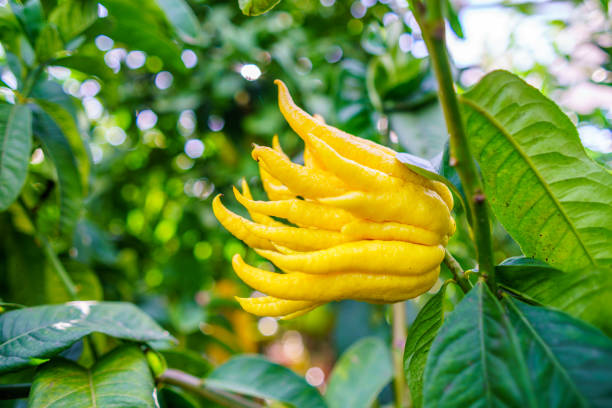
13. Jabuticaba (Brazil)
- Taste: Like a grape crossed with lychee, with a wine-like depth.
- Wild Trait: Fruits sprout directly from the bark—looks like purple bubbles!
- Tip: Try jabuticaba wine or jam (fresh ones spoil in 3 days).
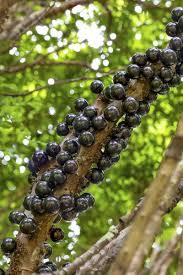
14. Cupuaçu (Brazil)
- Taste: Like a mix of pear, banana, and chocolate.
- Uses: Amazonians make it into mousses, smoothies, and even sunscreen!
- Why Rare: The fragile pulp rarely survives export.
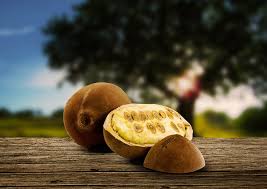
15. Miracle Fruit (West Africa)
- Taste: Doesn’t taste like much… but after eating it, lemons taste like candy!
- Science: Contains miraculin, a protein that tricks taste buds.
- Party Trick: Host a “flavour-tripping” party with sour foods.

16. Ackee Fruit (Jamaica)
- Taste: Buttery, like scrambled eggs when cooked.
- Warning: Unripe ackee is poisonous—locals wait for it to “smile” (split open).
- National Dish: Served with saltfish for Jamaica’s breakfast staple.
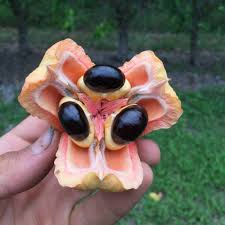
17. Pepino Melon (Peru)
- Taste: Honeydew melon meets cucumber.
- Looks: Like a mini melon with purple stripes.
- Best Way to Eat: Chilled and sliced—refreshing in salads.

18. Safou (Africa)
- Taste: Like avocado with a smoky, savory twist.
- Street Food: Roasted over coals and sprinkled with salt.
- Nickname: “Butterfruit” for its oily, rich texture.
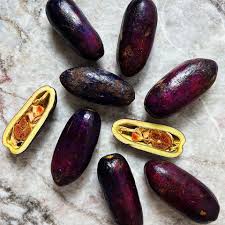
19. Salak (Indonesia)
- Taste: Sweet and crunchy, like a mix of apple and pineapple.
- Peeling Trick: Rub the scaly skin to loosen it.
- Local Name: “Snake fruit” for its reddish-brown scales.
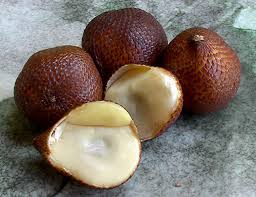
20. Yuzu (Japan)
- Taste: Like lemon, mandarin, and grapefruit had a baby.
- Uses: Priceless in Japanese cuisine—yuzu kosho (pepper paste), desserts, and cocktails.
- Fun Fact: A single yuzu can cost $20 in the U.S.!

Determining Characteristics of Exotic Fruits:
Now, we explore characteristics of exotic fruits, to know how they look, how they taste, why they are important , and where they grow.
1. Geographical Rarity (Where They Grow)
As mentioned before the exotic fruits are rare and unique , Therefore the fruit require special climates, like tropical or subtropical region climates.
So we can say many exotic fruits originate from the Amazon rainforest like acai berries, from south Asia like durian,mangosteen and from Africa baobab fruit, dragon fruit thrives in central America and vietnam, while the finger lime a citrus caviar like fruit native to Australia.
Because these fruits required limited growing conditions, such as high humidity atmosphere , volcanic soil , and distinct seasonal cycles. It means exotic fruit requires full time attention which is adding to their exotic appeal. Therefore this geographic specificity makes it unfamiliar and unique in non -native regions.
Examples:
- Mangosteen needs steamy, humid jungles (like Thailand)
- Yubari melons only grow in volcanic soil in Japan
- Dragon fruit loves dry, desert-like areas (like Vietnam)
Why it matters: These fruits can’t grow just anywhere – that’s what makes them rare and special!
2. Unconventional Physiology (How They Look)
Exotic fruits break all the normal fruit rules with some unique characteristics mentioned below:
- Crazy outer skins (some have spikes, hairs, or hard shells).
- Surprise insides (you never know what color/texture you will find inside the fruit when you slice it).
- Wild size differences (from tiny berries to giant fruits).
For Examples:
- Rambutan looks like a hairy sea creature.
- Durian has sharp spikes like a medieval weapon.
- Jackfruit is as big as a toddler!
- Miracle fruit is smaller than a grape.
What this means: Their unusual looks help protect them from animals and help spread their seed, So exotic fruit continue their polination and self cultivation process.
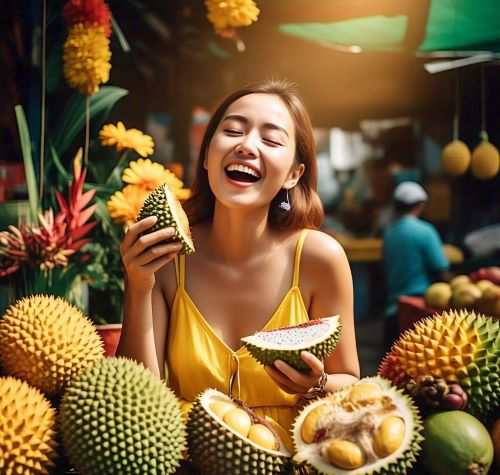
3. Complex Flavor Profiles (How They Taste):
The quality of exotic fruits always surprise you with its unique and unforgettable taste buds with:
- Mix of flavors (like sweet + sour + creamy all at once)
- Fun textures (some are jelly-like, others are crunchy).
- Strong smells (some smell heavenly, others… not so much).
Taste Adventures:
- Exotic Mangosteen Fruit = peach + orange + vanilla swirl.
- Exotic Cherimoya Fruit = banana pudding mixed with strawberry.
- Exotic Durian Fruit = sweet custard with a funky cheese smell.
Remember: Taste Exotic fruits at different ripeness levels – a green vs. ripe fruit can taste completely different! Its nature is a surprise for you.
4. Exotic Fruits Cultural Significance (Why They Important)
The Exotic fruits are not just common fruit food , but each fruit identicate different region or different tradition and cultural part of:
- National pride (many countries have a “national fruit”)
- Religious traditions (used in ceremonies and festivals)
- History (some were so valuable they were like money!)
National Pride & Exotic Fruits: Edible Symbols of Culture:
Some exotic fruits are so beloved, they become national icons as a cultural and traditional, let’s discover some of thems:
Jamaica’s Ackee Fruit:
- Official national fruit since 1962.
- Featured on the Jamaican $100 bill.
- So important that illegal ackee picking carries fines!
India’s Mango:
- Called the “King of Fruits” in Indian culture.
- Over 1,000 varieties are grown across the country.
- The Mughal emperors had special mango orchards.
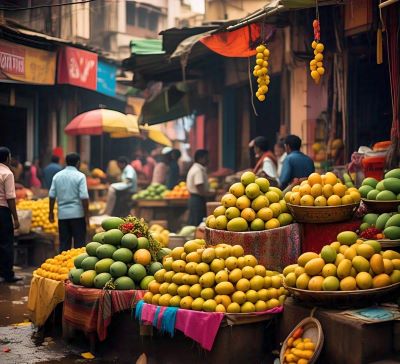
Thailand’s Durian
- Nicknamed the “King of Fruits”
- Annual Durian Festival The Chanthaburi attracts thousands of visitors to thailand.
- Some Thai hotels have “no durian” signs due to its strong smell.
Brazil’s Cupuaçu:
- Featured in Amazonian folk tales.
- Used in national desserts and cosmetics.
- The pulp is called “the pharmacy in a fruit”.
Philippines’ Mangosteen
- Called the “Queen of Fruits”.
- Believed to be Queen Victoria’s favorite.
- Farmers use bamboo poles to carefully harvest them.
Why you should care: When you eat these fruits, you are tasting centuries of history and tradition.
Unique Characteristics of Exotic Fruits:
Evolutionary Adaptations:
Nature designed exotic fruits to survive themselves and thrive in their environments. For example the durian: its infamous rotten-meat smell is not just for shock value. It evolved to attract jungle mammals like tigers and elephants, which eat the fruit and spread its seeds.
Similarly, the bright colors of dragon fruit and rambutan act as neon signs for birds and monkeys, while hard shells (like on coconut or hala fruit) protect seeds from harsh weather. The natural programmed system ensures each fruit’s survival in competitive ecosystems.
Exotic Isolation :
Some fruits became exotic because they grew in remote places with no outside interference. The Galápagos tomato, for example, developed thick skin and tiny seeds after evolving on islands with no natural predators.
Likewise, Jabuticaba (the Brazilian tree-trunk grape) grows only in a small rainforest region, giving it a unique texture and flavor. Isolation creates one-of-a-kind fruits that can’t be found—or replicated—anywhere else.
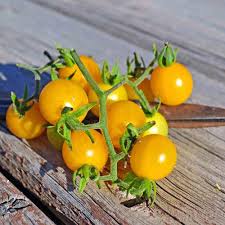
Exotic fruits by Human Cultivation:
For centuries, farmers have reshaped wild fruits into the delicious varieties we know today. Thai mangoes didn’t start out sweet and juicy—they were small, fibrous, and sour until 500+ years of selective breeding perfected them.
The same goes for seedless watermelons, extra-sweet Japanese strawberries, and creamy cherimoyas. Humans didn’t just discover exotic fruits; we helped create them through patience, experimentation, and a lot of tasting along the way!
Biodiversity Preservation:
Many exotic fruits are like nature’s hidden treasures—rare, wild, and at risk. Deforestation and climate change threaten fruits like the mangosteen and junglesop, which grow only in specific rainforests.
By choosing these fruits, we help farmers preserve them, protecting not just unique flavors but also the genetic diversity that keeps our food supply resilient. Think of it as eating to save the planet—one delicious bite at a time!
Culinary Innovation:
Exotic fruits are playgrounds for chefs and food lovers. Imagine finger limes bursting like citrus caviar over sushi, or dragon fruit foam topping a cocktail. These fruits inspire creativity—whether it’s turning jackfruit into vegan pulled pork or using miracle berries to reinvent desserts. They’re not just ingredients; they’re invitations to experiment and surprise your taste buds.
Economic Impact:
Behind every exotic fruit is a farmer, a family, or even an entire community relying on it. The global demand for these fruits is booming (set to hit $19.3 billion by 2025!), creating jobs from Brazilian açaí pickers to Thai durian exporters. When you buy a rare fruit, you’re supporting small-scale growers and helping keep traditional farming alive.
Next time you try an exotic fruit, remember—you’re tasting a story that’s bigger than just flavor.
Exotic Fruits are Packed With Health Benefits:
The exotic fruits are not just a common fruits, but these are nutritional powerhouses, when we compare to other fruit benefits we get better point of view.
Nutrition Showdown Table comparing Exotic Fruits with Everyday Fruits:
| Category | Exotic Fruits | Everyday Fruits 🍎 | Winner? 🏆 |
|---|---|---|---|
| Vitamin C | Acerola Cherry (1,600mg/ 100g) | Orange (53mg/100g) | Exotic |
| Antioxidants | Maqui Berry (High ORAC score) | Blueberries (Good ORAC) | Exotic ✅(ORAC = Oxygen Radical Absorbance Capacity) |
| Fiber | Guava (5.4g/100g) 🌿 | Apple (2.4g/100g) | Exotic |
| Vitamin A | Mango (54μg/100g | Carrot (835μg/100g) 🥕 | Everyday |
| Potassium | Durian (436mg/100g) | Banana (358mg/100g) | Exotic |
| Hydration | Starfruit (91% water) 💦 | Watermelon (92% water) 🍉 | Tie |
| Rare Nutrients | Pitaya (Dragon Fruit): Betalains (anti-inflammatory) | — | Exotic |
| Sugar Content | Lychee (15g sugar/100g) | Grapes (16g sugar/100g) | Similar 😐 |
| Healthy Fats | Avocado (15g fat/100g) 🥑 | — (Most fruits are low-fat) | Exotic |
| Accessibility | Hard to find, expensive 💰 | Widely available, cheap 💲 | Everyday |
Most Expensive Exotic Fruits: Luxury in Every Bite:
Some fruits are not just food, but they are lifestyle and status symbols, investment pieces, and even gifts of honor. So want to know why these ultra-luxurious exotic fruits cost more than a first-class plane ticket:
1. Yubari King Melon from (Japan):
Price Record: $7,000 for two melons (2025 auction).
Grown In: Yubari, Hokkaido (Japan)
Why So Expensive?
- Perfect Conditions: Grown in volcanic soil with precise temperature control
- Labor of Love: Each melon is hand-pollinated and massaged for perfect roundness
- Grading System: Only the sweetest (Brix 15+), most symmetrical melons earn the “King” title.
- Cultural Value: Given as high-status gifts in Japanese business culture
🍈 Fun Fact: The first harvest melons are auctioned—some buyers never even eat them (they’re displayed as trophies!).

2. Ruby Roman Grapes from (Japan) :
Price Record: $11,000 for 24 grapes (2020 auction)
Grown In: Ishikawa Prefecture (Japan)
Why So Expensive?
- Size Matters: Each grape must weigh ≥20g (size of a ping-pong ball)
- Sugar Standard: Brix 18+ (twice as sweet as regular grapes)
- Color Rules: Deep red hue with no blemishes
- Rarity: Only 200-300 bunches pass inspection yearly
💎 Fun Fact: These grapes are so precious, farmers protect them with individual paper sleeves while growing.

3. Densuke Watermelon (Japan):
Price Record: $6,000 for one watermelon (2021 auction).
Grown In: Hokkaido (Japan).
Why So Expensive?
- Unique Look: Jet-black rind with no stripes—only 10,000 grow annually.
- Flawless Demand: Even minor scratches disqualify densuke melon.
- Cultural Ritual: Given as wedding gifts and corporate gestures.
- Texture: Crunchier and sweeter than regular watermelons.
🎁 Fun Fact: The first Densuke of the season always sells for thousands—even before it’s ripe!
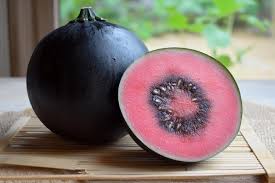
Why Do These Fruits Cost a Fortune?
- Perfection Required:
- Only 1% of harvests meet elite standards.
- Farmers discard imperfect fruits immediately.
- Artisan Cultivation:
- Grown like fine wine grapes (individual attention, organic methods)
- Some fruits get sunglasses to prevent sunburn!
- Auction Culture:
- First harvests sell at celebrity-style auctions.
- Buyers (often department stores) use them for marketing prestige
- Symbolic Value:
- In Japan, gifting luxury fruit, its like they give you ultimate respect.
- Equivalent to giving rare champagne or diamonds.
How to (Maybe) Try Them Cheaper:
- Visit Japan in summer for sample slices at high-end fruit parlors.
- Look for “second-grade” versions (smaller/less perfect, but 90% cheaper).
- Grow your own! Seeds/kits exist (but good luck matching Japanese craftsmanship).
Would you pay $1,000 for a single grape? Or is this fruit madness?
How to Buy Exotic Fruits with Confidence
- Check ripeness: Smell (durian should be fragrant, not rotten) and touch (jackfruit should yield slightly).
- Order online: Trusted sellers like, miamifruit.org or other Exotic Fruit sellers in Market.
- Store properly: Most last 2–3 days at room temperature; freeze pulps like acai for longevity.
Anecdote: My first online durian order was a disaster—it arrived overripe! Now I always read reviews.
Why Exotic Fruits Deserve a Spot in Your Kitchen:
Exotic fruits are not just food—they’re edible passports to distant jungles, centuries-old traditions, and nature’s wildest creativity. Imagine cracking open a durian in Malaysia and joining locals in their love-hate relationship with the “King of Fruits,” or savoring mangosteen in Thailand knowing queens once waged wars over its sweet segments.
These fruits transform your kitchen into a global adventure: one day you’re scooping Brazilian cupuaçu into smoothies like an Amazonian native, the next you’re hosting a miracle fruit party where lemons taste like candy.
Beyond their Instagram-worthy looks, they pack nutrients most common fruits lack—like açaí’s brain-boosting antioxidants or jackfruit’s meaty plant protein.
Whether it’s the thrill of trying a spiky rambutan, the luxury of finding Yubari melon in Tokyo, or the simple joy of growing a dragon fruit cactus at home, these flavors do more than feed you—they spark curiosity, connect cultures, and remind us that nature still holds delicious secrets.
Your next great bite could be a fruit you’ve never even heard of… yet.
Question and Answers:
1. What is meant by exotic fruit?
Exotic fruits are unusual, tropical, or rare fruits that are not commonly found in regular supermarkets. They often come from far-off places with warm climates and have unique flavors, textures, and appearances. Examples include dragon fruit, durian, mangosteen, and jackfruit.
2. What is the healthiest exotic fruit?
While many exotic fruits are packed with nutrients, some of the healthiest options are:
- Dragon Fruit – High in antioxidants, fiber, and vitamin C.
- Mangosteen – Known as the “queen of fruits,” rich in vitamins and anti-inflammatory properties.
- Acai Berry – Loaded with antioxidants and healthy fats.
- Guava – Super high in vitamin C (even more than oranges!).
3. What is the rarest fruit?
Some of the rarest fruits in the world include:
- Jabuticaba – A Brazilian fruit that grows directly on the tree trunk!
- Miracle Berry – Changes sour flavors to sweet when eaten.
- Dragon’s Blood Fruit – A bright red, spiky fruit from Vietnam.
- Black Sapote – Tastes like chocolate pudding but is actually a fruit!

